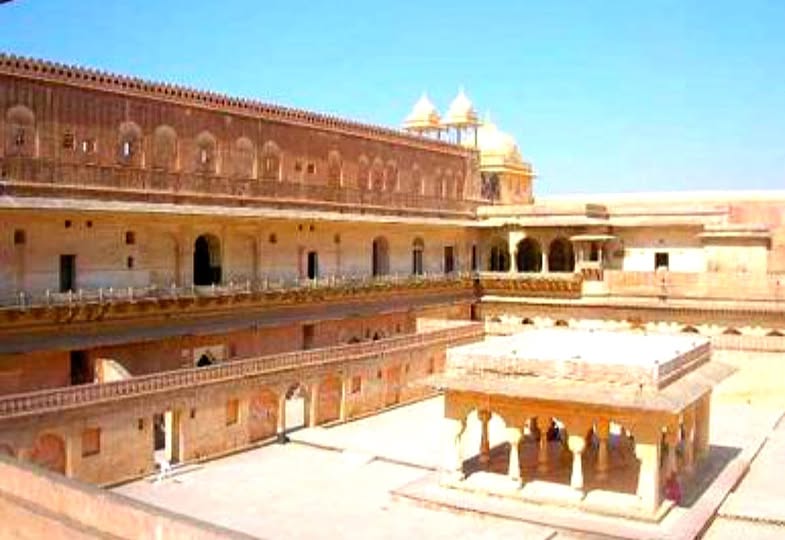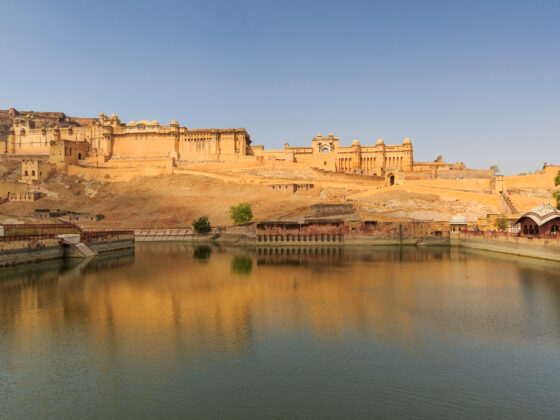Amber Palace: A Majestic Blend of Rajput and Mughal Grandeur

Amber Palace: A Majestic Blend of Rajput and Mughal Grandeur
Introduction
Amber Palace, also known as Amer Fort, stands as a magnificent testament to Rajasthan’s royal heritage. Nestled on the rugged Aravalli Hills, this architectural marvel combines Rajput and Mughal influences, making it one of India’s most iconic forts. Built in the 16th century by Raja Man Singh I, Amber Palace continues to captivate visitors with its intricate carvings, grand courtyards, and mesmerizing mirror work. This article delves into the history, architectural brilliance, and cultural significance of this UNESCO World Heritage Site.
Historical Significance
Amber Palace served as the capital of the Kachwaha Rajputs before Jaipur was established. Raja Man Singh I, one of Emperor Akbar’s most trusted generals, initiated the construction of the fort in 1592. Successive rulers expanded and enhanced the fort, incorporating Mughal artistic elements. The palace remained the royal residence until the 18th century when Jaipur became the new capital. Despite centuries of change, Amber Palace retains its grandeur and continues to be a significant symbol of Rajasthan’s regal past.
Architectural Marvel
Amber Palace exemplifies a perfect blend of Hindu and Mughal architectural styles. Built using red sandstone and white marble, the fort’s artistic elegance is evident in its:
- Ganesh Pol: The grand entrance gate adorned with vibrant frescoes and latticed windows.
- Diwan-i-Aam (Hall of Public Audience): A massive hall featuring carved pillars and an elevated throne.
- Diwan-i-Khas (Hall of Private Audience): Known for its intricate marble paneling and floral motifs.
- Sheesh Mahal (Mirror Palace): A dazzling chamber decorated with thousands of tiny mirrors that reflect even a single candle’s light, illuminating the entire room.
- Sukh Niwas: A cooling retreat with a unique water channel system that acted as an early form of air conditioning.
Each section of the palace showcases a stunning interplay of Rajputana artistry and Mughal finesse, making it an architectural masterpiece.
Cultural and Historical Importance
Amber Palace is not just a historic fort but also a cultural hub. It hosts several festivals and events that showcase Rajasthan’s vibrant traditions. The palace is a prominent venue for:
- Light and Sound Show: An enchanting narration of Amber Fort’s history through stunning visuals and dramatic storytelling.
- Teej Festival: Celebrated with great enthusiasm, this festival brings the fort to life with processions, folk music, and dance performances.
- Elephant Rides: A traditional way to ascend the fort, providing a glimpse into the royal lifestyle of the Rajput kings.
How to Reach Amber Palace
Amber Palace is located approximately 11 km from Jaipur city center. Visitors can reach the fort via:
- By Air: Jaipur International Airport is the nearest airport, about 22 km away.
- By Rail: Jaipur Railway Station is well-connected to major cities in India.
- By Road: Local taxis, auto-rickshaws, and public buses make it easy to access the fort.
Best Time to Visit
The best time to explore Amber Palace is from October to March, when the weather is pleasant. Summers can be scorching, while monsoons bring occasional showers that enhance the fort’s beauty. Visiting early in the morning or late in the afternoon allows tourists to avoid crowds and enjoy the mesmerizing sunset views.
Nearby Attractions
While visiting Amber Palace, tourists can also explore:
- Jaigarh Fort: Located on a higher hill, offering spectacular views of Amber Palace and housing the world’s largest cannon, Jaivana.
- Nahargarh Fort: Another stunning fort with panoramic views of Jaipur city.
- Jal Mahal: A beautiful water palace situated in the middle of Man Sagar Lake.
- City Palace: A royal complex showcasing the grandeur of Jaipur’s Maharajas.
- Hawa Mahal: The iconic ‘Palace of Winds’ known for its unique facade with 953 small windows.
Tips for Visitors
- Wear comfortable shoes as the palace requires a lot of walking.
- Hire a local guide for a deeper understanding of the fort’s history and architecture.
- Capture breathtaking views of the palace and surrounding hills from the fort’s higher points.
- Visit during early hours to avoid heavy tourist crowds.
Conclusion
Amber Palace stands as a magnificent symbol of Rajasthan’s royal heritage, offering an unforgettable journey through history, art, and culture. Its breathtaking architecture, rich history, and cultural significance make it a must-visit destination for history enthusiasts and travelers alike. Whether you’re admiring the intricate mirror work of Sheesh Mahal or witnessing a stunning sunset over the Aravalli Hills, Amber Palace promises an experience that transcends time and leaves visitors in awe of its grandeur.







